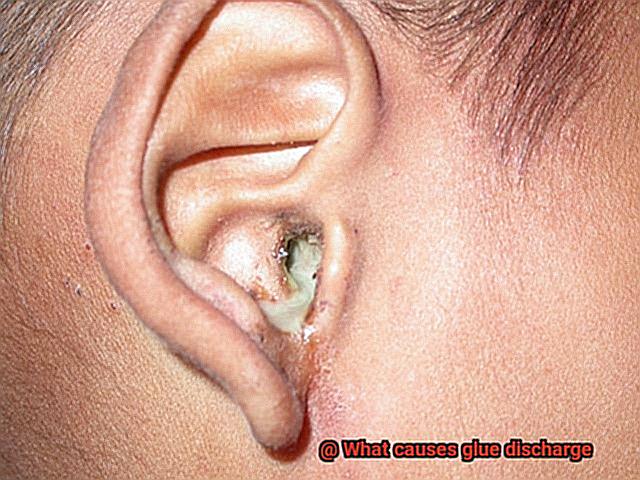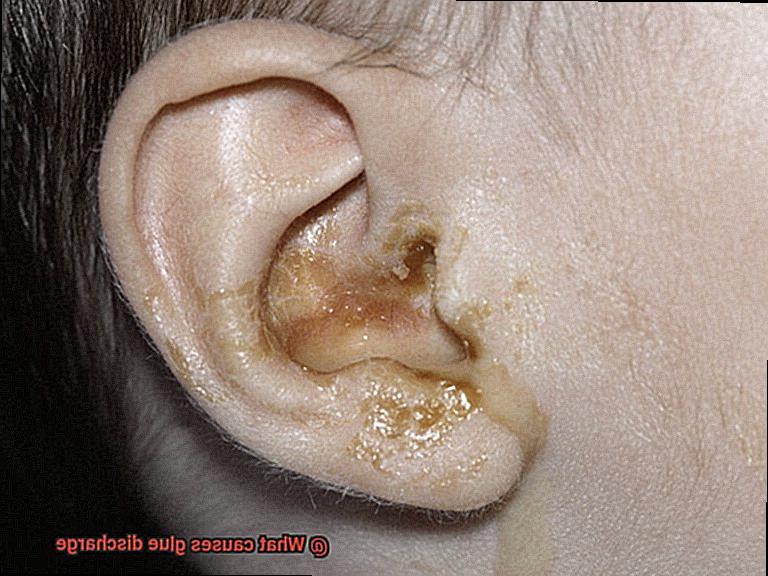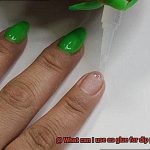Have you ever found yourself in a sticky situation after using glue, adhesive, or tape? That unexpected residue left behind, known as glue discharge, can be quite bothersome. Whether you’re an avid crafter, a DIY enthusiast, or simply someone who occasionally needs to stick things together, understanding the causes of glue discharge is key to avoiding frustration.
But fear not. In this blog post, we’ll dive headfirst into the captivating world of adhesive chemistry and unravel the primary culprits behind this gooey phenomenon. From exploring the intricate chemical composition and curing process of adhesive products to shedding light on the impact of environmental factors, we’ll demystify the secrets surrounding glue discharge.
So whether you’re battling glue discharge in your creative projects, household repairs, or industrial endeavors, let’s arm ourselves with knowledge and bid farewell to those sticky surprises. Get ready to say hello to successful and stress-free glue applications as we uncover what truly causes this pesky problem.
Excessive Application of Glue
Contents
When it comes to using glue for your projects, it’s essential to strike the right balance between applying enough adhesive for a strong bond and avoiding excessive application. Excessive glue application can lead to unsightly glue discharge, longer drying times, and even interference with the functionality of your project.
As an expert in this field, I’m here to share some valuable tips on how to avoid these consequences and achieve a clean and professional adhesive application.
Read and Follow Instructions:
To prevent excessive glue application, it is crucial to carefully read and follow the instructions provided by the glue manufacturer. These instructions often specify the appropriate amount of glue to be used for different materials and applications.
By understanding these guidelines, you can ensure the right amount of adhesive is applied, minimizing the risk of excess glue and subsequent discharge.
Prepare the Surfaces:
Before applying glue, take the time to properly clean and prepare the surfaces. Clean and dry surfaces provide better adhesion, reducing the need for excess adhesive.

Removing any dirt, dust, or oil from the surfaces ensures a smooth bonding process and helps prevent excessive glue application.
Use Tools for Precision:
When precise amounts of glue are required, consider using tools such as brushes, syringes, or applicators to control and distribute the adhesive more accurately.
These tools allow for better control over the amount of glue being applied, minimizing the chances of over-application and reducing the risk of glue discharge.
Consider Viscosity:
Choosing an adhesive with an appropriate viscosity for your specific application is crucial in preventing excessive glue application. If the glue is too thin or runny, it may easily seep out from the bonded surfaces.
On the other hand, if it’s too thick, it may not spread evenly, leading to gaps or voids. Selecting a glue with the right viscosity ensures a controlled application and reduces the likelihood of excess glue.
Mind the Environment:
Take into account the temperature and humidity levels when applying glue. High temperatures can cause glue to become more fluid, increasing the likelihood of discharge. High humidity levels can prolong drying times and lead to seepage.
It is important to store and use adhesives within the recommended temperature and humidity ranges specified by the manufacturer to prevent excessive glue application.
Allow Sufficient Curing Time:
To prevent glue discharge, it’s crucial to allow the adhesive to fully cure before subjecting it to pressure or stress. Follow the manufacturer’s recommended curing time to ensure a strong bond and avoid any unwanted seepage.
Rushing the drying process can result in incomplete bonding and potential glue discharge.
Viscosity of the Adhesive
When it comes to choosing the right adhesive for your project, one of the most critical factors to consider is the viscosity of the adhesive. Viscosity refers to the thickness or resistance to flow of a liquid or adhesive.
It plays a significant role in the application process and can greatly impact the success of your project.
So, why is viscosity so important? Let’s dive into it.
Firstly, the viscosity of an adhesive determines how it flows during application. Adhesives with low viscosity are thin and have a fast flow rate, making them ideal for applications that require quick and easy coverage, such as bonding large surfaces.
On the other hand, high-viscosity adhesives are thicker and have a slower flow rate, providing more control and precision for delicate or small parts.
Temperature also affects viscosity. As temperature increases, most adhesives become thinner and flow more easily. Conversely, at lower temperatures, adhesives become thicker and have a higher resistance to flow. Therefore, it’s important to consider the temperature conditions during application and choose an adhesive with the appropriate viscosity range.
Using an adhesive with the wrong viscosity can lead to issues such as excessive glue discharge or inadequate bonding strength. If the viscosity is too low, the adhesive may flow too quickly, resulting in excess glue being dispensed. This can be messy and wasteful. On the other hand, if the viscosity is too high, it may be difficult for the adhesive to flow out of the container properly, leading to inconsistent or insufficient glue discharge.
To avoid problems with glue discharge, it’s crucial to follow manufacturers’ guidelines regarding the appropriate viscosity range for their adhesive products. They often provide recommendations based on different application requirements. Additionally, adjusting the temperature during application can also help control the viscosity and prevent excessive glue discharge.
It’s worth noting that factors such as the type of dispensing equipment and application technique can also influence glue discharge. Therefore, it’s important to consider these factors in conjunction with the viscosity of the adhesive when troubleshooting or addressing glue discharge issues.
Temperature and Humidity
In the intricate world of temperature and humidity, their relationship holds the key to understanding various phenomena. From glue dynamics to atmospheric conditions, temperature and humidity play a pivotal role in shaping our experiences and outcomes. Let’s embark on a journey through this captivating realm and unravel how these factors interplay with one another.
The Heat Factor:
- Temperature influences the behavior of substances, including glue.
- Higher temperatures increase molecular activity, making glue more fluid and runny.
- Excessive discharge occurs when the glue flows too easily, leading to dripping or oozing.
- Conversely, lower temperatures make glue thicker and more viscous, resulting in inadequate discharge.
- Inadequate discharge can lead to blockages and uneven glue distribution.
The Humidity Effect:
- Humidity refers to the amount of moisture in the air.
- High humidity levels introduce moisture into substances like glue, altering their composition.
- Moisture absorption can increase viscosity, making it challenging to discharge glue properly.
- Low humidity levels can cause moisture evaporation from glue, leading to drying and thickening.
- Glues sensitive to humidity may experience slow curing times or weakened adhesion.
Guidelines for Optimal Performance:
- Different materials have varying sensitivities to temperature and humidity.
- Follow manufacturer’s guidelines for storage and usage conditions.
- Store glues in controlled environments with stable temperature and humidity levels.
- Adjust workspace conditions within recommended ranges for desired bonding results.

Substrate Porosity
Substrate porosity is a fascinating concept that plays a crucial role in the world of adhesion. It refers to the permeability or absorbency of the surface that the glue is being applied to. Imagine it as the surface’s ability to soak up that sticky goodness. The level of porosity varies depending on the material of the substrate, with wood generally being more porous than metal or glass.
Now, let’s delve into the intriguing effects of substrate porosity on glue discharge. When working with a highly porous substrate, such as wood, it can absorb the liquid components of the glue like a thirsty sponge. As a result, excess moisture is released during the curing process, leading to glue discharge. It’s like that unsightly discharge of excess glue you encounter when you’re in a sticky situation.

But here’s where it gets even more interesting – uneven porosity can wreak havoc on your gluing adventures. Picture this: some areas of the substrate are more absorbent than others. This creates an imbalance in absorption and evaporation rates, causing excess glue to be expelled during curing. It’s not exactly the outcome you were hoping for, right?
However, substrate porosity isn’t the only culprit in the world of glue discharge. Contaminants also play a significant role. Dust, dirt, oils – these sneaky little buggers love to hang out on surfaces and disrupt bonding experiences. They interfere with the adhesive properties of the glue and prevent proper bonding. As a result, excess glue may be forced out during curing.
So how do we combat this sticky situation? It all starts with proper surface preparation. Clean that surface like your life depends on it. Get rid of any contaminants or debris that might disrupt the adhesive properties of the glue. Applying a primer or sealer can also create a more uniform porosity, preventing excessive absorption.
Sometimes, you might need to call in reinforcements. That’s right – special adhesives formulated for porous substrates can be your saving grace. These nifty solutions have additives that help them penetrate into the porous surface, forming a strong bond without excessive moisture release.
And let’s not forget about application technique. Thin layers, multiple coats – these tactics can help prevent excessive absorption and minimize the risk of glue discharge.
Curing Time
Curing time, the duration required for glue to fully dry and harden, is a critical aspect to consider when working on projects that involve adhesive. The time it takes for glue to cure can vary depending on several factors, including the type of adhesive used, environmental conditions, thickness of the glue layer, and the potential use of accelerators.
Different adhesives have unique chemical compositions and properties that directly impact their curing time. For instance, super glues, also known as cyanoacrylate glues, are lightning fast in their curing process, often solidifying within mere seconds. Conversely, epoxy adhesives can be likened to the slow-moving tortoises of the glue world, requiring hours or even days to achieve full curing.
Environmental conditions also play a significant role in the curing time of glue. Higher temperatures and lower humidity levels create an ideal environment for swift curing, while lower temperatures and higher humidity levels can significantly impede the process. Therefore, it is crucial to adhere to recommended temperature and humidity guidelines provided by manufacturers for optimal curing results.
The thickness of the glue layer is another influential factor. Thicker layers necessitate more time for the moisture within the adhesive to evaporate, resulting in a longer curing period. In contrast, thinner layers allow for quicker evaporation and therefore hasten the drying and hardening process.
Moreover, accelerators or additives can be employed to expedite curing time for certain types of glues. These additives are typically mixed with the adhesive prior to application and can dramatically reduce curing duration. However, it is important to exercise caution and follow manufacturer instructions when using accelerators as excessive use may compromise the bond strength.
Prevention Methods
Glue discharge is an annoying problem that can wreak havoc on your projects and leave you with a sticky mess to clean up. Whether you’re a DIY enthusiast or a professional tradesperson, dealing with glue leakage is never fun.
Fortunately, there are several preventive measures you can take to keep your glue exactly where it’s supposed to be. In this article, we’ll explore seven effective prevention methods that will help you bid farewell to glue discharge for good.
Proper Storage:

The first line of defense against glue discharge begins with proper storage. Treat your adhesive like the precious substance it is by storing it in a cool, dry place away from extreme temperatures and moisture. By keeping the containers tightly sealed and shielded from direct sunlight, you can maintain the consistency and chemical composition of the glue.
Regular Inspection:
To catch any signs of leakage or damage early on, make regular inspections of your glue containers a habit. Look out for cracks, holes, or damaged seals on the containers. If you spot any defects, replace the container immediately to prevent potential discharge.
Handling and Transportation:
Handle your glue containers with tender loving care to avoid mishaps that could lead to leakage. Dropping or mishandling the containers can cause damage and subsequent discharge. During transportation, use appropriate packaging materials and ensure secure closure to minimize the risk of glue leakage.
Quality Control:
Investing in high-quality glue products is a wise choice if you want to reduce the chances of discharge. Reputable brands that adhere to strict quality control measures produce glues with fewer manufacturing defects or inconsistencies that could result in unwanted leakage.
Usage Guidelines:
To prevent overflow or leakage, always follow the manufacturer’s usage guidelines for optimal results. Applying excessive amounts of glue is a surefire way to invite disaster. Take care to apply the recommended amount of adhesive as stated on the product label or instructions.
Proper Application Technique:
Mastering the art of proper application technique is essential in preventing glue discharge. Clean and dry the surfaces to be bonded, ensuring they are free from contaminants that could interfere with the adhesive’s effectiveness. Apply the glue evenly and avoid applying excessive pressure during bonding to minimize the risk of discharge.
Clean-Up After Use:
Properly cleaning up after using glue is crucial for preventing future discharge. Wipe off any excess adhesive from the nozzle or container opening and ensure the cap or lid is tightly sealed. Residual glue left on the container’s exterior can harden and lead to clogs or leaks.
Proper Storage and Handling of Adhesives
Adhesives, those magical substances that hold things together, are a staple in various industries. From construction to crafting, they play a vital role in creating strong bonds. However, if not stored and handled correctly, they can become a sticky nightmare, causing unwanted glue discharge and messy situations.
To prevent these mishaps and ensure the longevity of your adhesives, it’s crucial to follow some guidelines for proper storage and handling. Let’s dive into the key points:
- Temperature Control: Adhesives can be quite sensitive to temperature fluctuations. Extreme heat or cold can mess with their properties, turning them into useless blobs. So, the best practice is to store them at room temperature like pampered divas. Keep them away from direct sunlight or any heating/cooling sources that may throw them off balance.
- Proper Sealing: Just like you would seal a jar of homemade jam to preserve its deliciousness, always tightly seal adhesive containers after use. This prevents air from barging in and reacting with the adhesive, causing it to harden prematurely. It also keeps moisture at bay, as even adhesives need some dryness to perform at their best.
- Vertical Storage: Picture a row of soldiers standing tall in formation – that’s how your adhesives should be stored. By keeping them upright, you prevent any settling or separation of ingredients within the adhesive. This means consistent performance when you need it most. Plus, it helps avoid any unfortunate leaks or spills that can turn your workspace into a sticky mess.
- Labeling and Organization: Clear communication is key in any relationship, including the one between you and your adhesives. Label those containers like you’re preparing for an art gallery exhibition. Include the contents and safety information so you know exactly which adhesive is which. And don’t skimp on organization – designate a special area for your adhesives to minimize confusion or accidental mix-ups.
- Handling Precautions: When it’s time to get down and stick things together, take some precautions to avoid glue discharge and accidents. Suit up like a superhero with protective gloves, goggles, or masks, depending on the adhesive type. Work in a well-ventilated area to keep those potentially harmful fumes at bay. It’s all about safety first, so you can save the day without any sticky mishaps.
- Storage Duration: Adhesives have a shelf life just like that carton of milk in your fridge. Pay attention to expiration dates and don’t let them get sour. Using expired adhesives can lead to weak bonds or downright failures. Time can also change an adhesive’s properties, making it more difficult to work with. So, keep an eye on those dates and bid farewell to any past-their-prime adhesives.
0JrQUAsUEgM” >
Conclusion
In conclusion, glue discharge can stem from a myriad of factors. Excessive application of glue, the thickness of the adhesive, temperature and humidity levels, the absorbency of the surface, curing time, and mishandling all contribute to this sticky situation. To ensure seamless adhesive applications and bid farewell to unwanted seepage, it is crucial to adhere to some key guidelines.
Firstly, avoid drowning your surfaces in glue by meticulously following the manufacturer’s instructions. Prioritize surface preparation by thoroughly cleansing them before applying any adhesive. Utilize precision tools to control and distribute the adhesive with finesse. Choose an adhesive viscosity that aligns with your specific needs. And always be mindful of temperature and humidity levels during application to thwart excessive glue discharge.
Moreover, substrate porosity plays a pivotal role in mitigating glue discharge. Scrub surfaces diligently to eradicate any contaminants that could hinder bonding. Consider employing primers or sealers for porous substrates to create a more uniform porosity. Additionally, mastering proper surface preparation and application techniques can curtail excessive absorption.
Curing time stands as another critical factor in averting glue discharge. Adhere strictly to the manufacturer’s recommendations for curing time to foster a robust bond while deterring unwelcome leakage. Manipulating environmental conditions like temperature and humidity can also help regulate curing time.
Lastly, safeguarding adhesives through proper storage and handling is paramount in circumventing glue discharge. Store adhesives in cool, dry environs far from extreme temperatures and moisture’s clutches. Seal containers tightly after use to shield against air or moisture tampering with the adhesive’s properties. Exercise caution when handling adhesives to sidestep accidents that may result in leakage.






